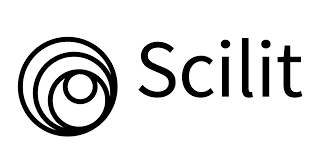Effectiveness of Dry Needling of the Tibialis Posterior for Control of the Medial Longitudinal Foot Arch
Missy A Thompson*, Amanda St Pierre, SueB Earl and Shiann Bontrager
Submission: May 15, 2024; Published: May 24, 2024
*Corresponding author: Missy A Thompson, Department of Health & Human Performance, Fort Lewis College, Schlessman Family Hall, Durango, CO, USA
How to cite this article: Thompson MA, St Pierre A, Earl SB and Bontrager S. Effectiveness of Dry Needling of the Tibialis Posterior for Control of the Medial Longitudinal Foot Arch. J Yoga & Physio. 2024; 11(3): 555813. DOI:10.19080/JYP.2024.11.555813
Abstract
This study investigates the efficacy of dry needling of the tibialis posterior in enhancing control of the medial longitudinal arch of the foot. Dry needling, a technique targeting trigger points within muscles, aims to alleviate pain and improve musculoskeletal function. Fifteen individuals volunteered for the study, with 12 meeting the participation criteria. Dry needling with electrical stimulation was administered unilaterally for 10 minutes to the tibialis posterior dominant leg, with the contralateral limb serving as a control. Pre and post dry needling, participants performed a short foot exercise during which plantar pressure distribution (surface area and load %) and arch height index (AHI) were evaluated. The results revealed significant reductions in surface area at the medial midfoot region and corresponding increases in AHI in the treatment limb post-dry needling. These changes were also significant when compared to the control limb. The tibialis posterior muscle is pivotal in maintaining the foot arch and dysfunction in this muscle can lead to biomechanical disturbances, affecting foot stability and gait mechanics. The findings of the present study indicate that dry needling, with its ability to elicit localized twitch responses and stimulate neurotransmitter release, may enhance neuromuscular function of the tibialis posterior. The findings suggest that dry needling of the tibialis posterior improves control of the medial longitudinal arch, potentially aiding in the management of foot posture disorders. Overall, the study highlights dry needling as a promising intervention for addressing tibialis posterior dysfunction and improving foot biomechanics.
Keywords: Foot Posture Index;Arch Height Index; Skeletal muscle; Tibialis posterior; Treatment limb
Abbreviations: AHI: Arch Height Index
Background
Dry needling involves the insertion of thin needles into trigger points within muscles, tendons, ligaments, or near nerves, aiming to alleviate pain and improve musculoskeletal function. The procedure targets myofascial trigger points, which are hypersensitive nodules within taut bands of skeletal muscle, often associated with musculoskeletal dysfunction and chronic pain conditions [1]. By eliciting localized twitch responses and stimulating the release of endogenous opioids and other neurotransmitters, dry needling can modulate pain perception, promote tissue healing, and enhance range of motion [2]. Previous research has demonstrated the efficacy of dry needling in reducing pain and improving functional outcomes in various musculoskeletal disorders, including myofascial pain syndrome, neck pain, shoulder impingement syndrome, and low back pain [3,4].
The tibialis posterior muscle assumes a pivotal role in maintaining the integrity of the medial longitudinal arch of the foot by acting as a primary stabilizer [5]. Dysfunction within this muscle can instigate a cascade of biomechanical disturbances, potentially compromising overall foot stability. Such dysfunction often manifests as flatfoot deformity, a condition characterized by the collapse of the arch that results in altered foot mechanics and weight distribution during gait [6]. Additionally, impaired tibialis posterior function can contribute to excessive foot pronation, further exacerbating gait abnormalities and predisposing individuals to various lower limb pathologies [7]. This underscores the critical importance of addressing tibialis posterior dysfunction in the management of foot and ankle disorders, highlighting the need for targeted interventions aimed at restoring muscle function and mitigating associated biomechanical impairments.
Dry needling of the tibialis posterior muscle presents a potential avenue for improving control of the medial longitudinal arch. However, dry needling of the tibialis posterior has received limited attention as a clinical modality likely because of the anatomical challenges posed by the deep location of the tibialis posterior within the posterior compartment of the lower leg. This deep location renders the tibialis posterior muscle less accessible for needle placement, thereby complicating the administration of dry needling techniques. Consequently, while dry needling holds promise as a therapeutic modality for addressing tibialis posterior dysfunction and improving gait mechanics, its efficacy has not been evaluated. Recent research has shown that the posterior/medial dry needling approach of the tibialis posterior muscle is an accurate and safe procedure [8]. Therefore, the purpose of this study was to determine if dry needling of the tibialis posterior is effective in improving control of the medial longitudinal arch.
Methods
A total of 15 individuals volunteered for the study, of these 12 individuals (10 females and 2 males) met the criteria for participation. Participants had an average age of 27.8±8.7 years, weight of 70±12.5 kg, and height of 1.68±0.08 m. Inclusion criteria for this study included being healthy, physically active (participation in a minimum of 30 minutes of physical activity 5 days per week) and a neutral foot posture. Exclusion criteria were fear of needling, use of blood thinners (including nonsteroidal anti-inflammatory drugs), active fever/cold, current or lingering musculoskeletal injuries of the lower extremity, and pronated or supinated foot posture. The study protocol was approved by the Fort Lewis College Institutional Review Board. Participants were informed on the purpose and procedures of the study, and all participants provided their written informed consent prior to initiation of the study.
The Foot Posture Index (FPI) was used to identify participants that met the criteria of having a neutral foot posture. The FPI consists of the following six criteria that are scored on a scale from -2 to +2: position of the talar head, supralateral and infra lateral malleoli curvature, calcaneal inversion or eversion, prominence of the talonavicular joint, congruence of the medial longitudinal arch, and abduction or adduction of the forefoot [9]. Foot posture is classified by the composite FPI score as follows: highly pronated: FPI>10, pronated: FPI 6 - 9, neutral: FPI 0 - 5, supinated: FPI: - 4 - -1, and highly supinated: FPI: ≤ - 5. A licensed physical therapist, with 10+ years of experience scored the FPI, and three individuals were excluded from the study based on a non-neutral foot posture.
Dry Needling
Participants received one session of dry needling of the tibialis posterior, which was performed by a licensed physical therapist with 10+ years of experience. Dry needling was applied unilaterally to the subjects’ dominant leg, the contralateral limb served as a control (treatment: dry needling treated limb; control: non treated limb). The therapist applied pressure to the medial aspect of the gastrocnemius and soleus muscles to move them posteriorly to expose the tibialis posterior. The needles were inserted near the distal 1/3 of the tibia and placed approximately 2.5 - 4 cm apart. Using the posterior/medial approach, the needles were directed posterior to the tibia and directed anterior and medially toward the tibia [8]. This approach aims to avoid contact with the tibial artery, vein, and nerve, as well as the fibularis hallucis longus and flexor digitorum longus. Needle placement was verified via electrical stimulation which induced a twitch response of foot inversion, without involvement of the toes. Electric stimulation was applied to the needles at an intensity that was strong but comfortable for each subject for a 10-minute duration.
Short Foot Exercise
Participants were trained in the performance of the short foot exercise [10]. During this exercise, the foot is shortened as the intrinsic muscles pull the first metatarsophalangeal joint towards the calcaneus while the tibialis posterior contracts to pull the navicular bone and other structures of the foot towards the tibia, effectively elevating the medial longitudinal arch [11]. Prior to testing participants practiced performing the short foot exercise under the guidance of a physical therapist.
The following biomechanical measures were examined in both the control and treatment limb pre and post dry needling of the tibialis posterior while participants performed a short foot exercise.
Pressure Analysis
Static analysis of plantar pressure distribution was performed with a Free Med baropodometric pressure mat collecting data at 400 Hz (Sensor Medica, Guidonia Montecelio, Roma, Italy). The plantar surface of the foot was divided into the following six regions defined by the anterior, middle and posterior thirds of the foot bisected by the plantar surface midline: medial and lateral forefoot, medial and lateral mid foot and medial and lateral rear foot. All participants stood barefoot on the mat with their feet shoulder width apart, looking straight ahead with their arms at their sides and performed the short foot exercise for 5 s. Data was recorded as the average of the 5 s short foot trial. For each of the six regions, surface area (cm2) and load (% of total) were compared pre and post dry needling in both the treatment and control limb.
Arch Height
The Arch Height Index (AHI) was determined by dividing the height of the dorsum of the foot (measured at 50% of foot length) by the truncated foot length, which is measured from the posterior or calcaneal surface to the first metatarsal head [12]. Video data was recorded at 100 fps from a GoPro Hero 10 camera (GoPro, San Mateo, CA) positioned at ground level to visualize the foot arch. The distance between the foot and camera was the same for all trials. So that the foot arch was visible, the participant placed their contralateral limb slightly posterior. Video data was recorded continuously for the 5 s short foot exercise. Still images were extracted at the end of every 1 s from the 5 s video data (5 total images) and imported into ImageJ (National Institute of Health, Bethesda, Maryland), which was used to obtain the AHI measurements. AHI was calculated as the average of the five still images for each participant.
Data Analysis
Descriptive statistics for all measured variables were calculated as the mean and standard deviation across all participants. Paired t-tests were used to compare the following: pre versus post dry needling for the treatment limb, post treatment versus control limb. A p-value of p < 0.05 indicated a statistically significant result. Statistical analyses were conducted in JASP (University of Amsterdam, Amsterdam, Netherlands).
Results
Pressure Analysis
Detailed descriptive statistics (Mean ± SD) for the pre, post and control static plantar pressure measures are provided in Table 1.
For the treatment limb there was a statistically significant decrease in surface area at the medial mid foot following dry needling (pre: 4.22 ± 3.27 cm², post: 3.52 ± 3.28 cm²; p = 0.04; Figure 1). Likewise, post dry needling the surface area at the medial mid foot was decreased in the treatment limb relative to the control limb (control: 4.00 ± 3.14; post treatment: 3.52 ± 3.28 cm², cm²; p = 0.05). For the medial/lateral forefoot, lateral midfoot, and medial/lateral rearfoot regions there was no significant difference in surface area following dry needling (pre vs. post and post vs. control, all p > 0.05; Table 1).

Arch Height
For the treatment limb there was a statistically significant increase in AHI following dry needling (pre: 0.23 ± 0.02 cm², post: 0.44 ± 0.02 cm²; p = 0.02; Figure 2). Likewise, post dry needling the AHI was increased in the treatment limb relative to the control limb (post treatment: 0.44 ± 0.02 cm², control: 0.29 ± 0.03 cm²; p = 0.03; Figure 2).
Discussion
The findings of the present study demonstrate an enhanced ability of subjects to raise the functional half dome of the foot following dry needling of the tibialis posterior. This was indicated by a significant reduction in surface area at the medial midfoot region and correspondingly a significant increase in AHI during a short foot exercise performed post dry needling of the tibialis posterior. These significant changes were observed both in the treatment limb post dry needling of the tibialis posterior, and in comparison, to the untreated control limb.
The tibialis posterior plays a crucial role in raising the foot arch, primarily acting as a dynamic stabilizer of the medial longitudinal arch [13,14]. When the tibialis posterior contracts, it pulls the navicular bone and other structures of the foot towards the tibia, effectively elevating the arch [11]. This action helps to support the arch and prevent excessive collapse or flattening of the foot during weight-bearing activities like walking, running, and standing. Additionally, the tibialis posterior contributes to controlling the rate of pronation and supination of the foot, further aiding in arch support and overall foot stability [15]. In the present study we showed that dry needling with electrical stimulation enhanced the ability of most subjects to raise medial longitudinal foot arch. This improved neuromuscular control likely stems enhanced muscle coordination and proprioception following dry needling [16].

Dysfunction or weakness of the tibialis posterior can lead to decreased arch support, resulting in conditions such as flatfoot deformity or excessive foot pronation [11]. Given that dysfunction of the tibialis posterior can contribute to abnormal foot posture, dry needling may help correct these postural deviations by improving neuromuscular function the tibialis posterior. Dry needling works by eliciting a localized twitch response targeted at trigger points or areas of muscle tension within the affected muscle tissue [17]. The twitch response is believed to be associated with the release of biochemicals, including endorphins and other neurotransmitters, which help to promote muscle relaxation [2]. The insertion of needles into trigger points also disrupts dysfunctional neural pathways and resets the neuromuscular system, leading to improved muscle function and range of motion [2]. While the present study utilized subjects without tibialis posterior dysfunction, the finding of improved arch control following dry needling with electrical stimulation of the tibialis posterior suggests that this may be an effective treatment modality for individuals with tibialis posterior dysfunction. Future research should examine the effectiveness of dry needling of the tibialis posterior in individuals with tibialis posterior dysfunction.
The tibialis posterior plays an important role in gait by maintaining the arch of the foot and preventing excessive collapse or flattening during stance [7]. Dysfunction of the tibialis posterior muscle, such as weakness or hypertonicity, can lead to inadequate support of the foot arch, resulting in conditions such as flatfoot deformity or excessive foot pronation [11]. This can cause biomechanical imbalances, altered gait patterns, and increased stress on surrounding structures, potentially leading to pain and dysfunction in the foot, ankle, knee, and even the lower back. By improving the function of the tibialis posterior through interventions such as dry needling, individuals can experience enhanced control and stability of the foot arch. This can help distribute weight more evenly across the foot, reduce excessive pronation, and mitigate the risk of overuse injuries or chronic pain conditions associated with abnormal foot mechanics. The present study indicates that dry needling can enhance tibialis posterior function in a static posture, future studies should examine the effects of dry needling of the tibialis posterior during dynamic tasks such as walking or running.
The present study is not without limitation. First, the findings were observed in a small, non-clinical population and all participants exhibited a neutral foot posture. Future research should examine the effect of dry needling of the tibialis posterior in pronated foot postures to ultimately to examine the clinical effectiveness. Additionally, in the present study participants received a single dry needling treatment and biomechanical effects were observed immediately after the dry needling treatment. Future research should examine therapeutic treatment programs using multiple treatment session and examine the lasting effects of dry needling. Lastly, the present study utilized dry needling with electrical stimulation. Future research should examine the effectiveness of dry needling with and without electrical stimulation.
Conclusion
In conclusion, the purpose of this study was to examine the effectiveness of dry needling of the tibialis posterior in improving control of the medial longitudinal arch. We observed significant reductions in surface area at the medial midfoot region and corresponding increases in AHI during a short foot exercise post-dry needling of the tibialis posterior. The findings show enhanced control of the medial longitudinal arch following dry needling with electrical stimulation of the tibialis posterior, suggesting this may be an effective treatment for individuals with tibialis posterior dysfunction.
References
- Ha JF, Longnecker N (2010) Doctor-patient communication: a review. Ochsner J 10(1): 38-43.
- Stewart MA (1995) Effective physician-patient communication and health outcomes: a review. CMAJ 152(9): 1423-1433.
- Dugdale DC, Epstein R, Pantilat SZ (1999) Time and the patient-physician relationship. J Gen Intern Med 14(Suppl 1): S34-40.
- Robertson K (2005) Active listening: more than just paying attention. Aust Fam Physician 34(12): 1053-1055.
- Hardee JT (2003) An Overview of Empathy. Perm J 7(4): 51-54.
- Dang BN, Westbrook RA, Njue SM, Giordano TP (2017) Building trust and rapport early in the new doctor-patient relationship: a longitudinal qualitative study. BMC Med Educ 17(1): 32.
- Kern EB (2017) The Birkett Lecture: Avoiding the unhappy patient: The ABCs of rapport building. Laryngoscope 127(11): 2517-2521.
- Wilson SF, Marks R, Collins N, Warner B, Frick L (2004) Benefits of multidisciplinary case conferencing using audiovisual compared with telephone communication: a randomized controlled trial. J Telemed Telecare 10(6): 351-354.
- Jackson JL, Chamberlin J, Kroenke K (2001) Predictors of patient satisfaction. Soc Sci Med 52(4): 609-620.
- Barnett A, Ball L, Coppieters MW, Morris NR, Kendall E, et al. (2023) Patients’ experiences with rehabilitation care: a qualitative study to inform patient-centred outcomes. Disability and Rehabilitation 45(8): 1307-1314.
- Kressin NR, Chapman SE, Magnani JW (2016) A Tale of Two Patients: Patient-Centered Approaches to Adherence as a Gateway to Reducing Disparities. Circulation 133(24): 2583-2592.
- Hall DE, Prochazka AV, Fink AS (2012) Informed consent for clinical treatment. CMAJ 184(5): 533-540.
- Zárate-Torres R, Correa JC (2023) How good is the Myers-Briggs Type Indicator for predicting leadership-related behaviors? Front Psychol 14: 940961.
- Jenkins L, Parry R, Pino M (2021) Providing Opportunities for Patients to Say More about Their Pain without Overtly Asking: A Conversation Analysis of Doctors Repeating Patient Answers in Palliative Care Pain Assessment. Applied Linguistics 42(5): 990-1013.
- Belzer EJ (1999) Improving Patient Communication in No Time. Fam Pract Manag 6(5): 23-28.
- Birk S (2011)Wish Statements’ Help Doctors Deliver Painful News. Caring for the Ages 12(1): 13.
- Quill TE, Arnold RM, Platt F (2011) I wish things were different”: expressing wishes in response to loss, futility, and unrealistic hopes. Ann Intern Med 135(7): 551-555.
- Leopold SS (2019) Editorial: What Do You Say When a Patient Says Thank You? Clin Orthop Relat Res 477(8): 1763-1764.
- Miron-Shatz T, Becker S, Zaromb F, Mertens A, Tsafrir A (2017) A Phenomenal Person and Doctor”: Thank You Letters to Medical Care Providers. Interact J Med Res 6(2): e22.
- Buetow SA, Aroll B (2012) Doctor gratitude: a framework and practical suggestions. CMAJ 184(18): 2064.
- Huang CH, Wu HH, Lee YC, Li L (2019) What Role Does Patient Gratitude Play in the Relationship Between Relationship Quality and Patient Loyalty? Inquiry 56: 46958019868324.
- Lanham M, Rye M, Rimsky L, Weill S (2012) How Gratitude Relates to Burnout and Job Satisfaction in Mental Health Professionals. J Mental Health Counseling 34(4): 341-354.
- Ward HO, Kibble S, Mehta G, Franklin M, Kovoor J, et al. (2013) How asking patients a simple question enhances care at the bedside: medical students as agents of quality improvement. Perm J 17(4): 27-31.
- Hellström O (1998) Dialogue medicine: a health-liberating attitude in general practice. Patient Educ Couns 35(3): 221-231.






























